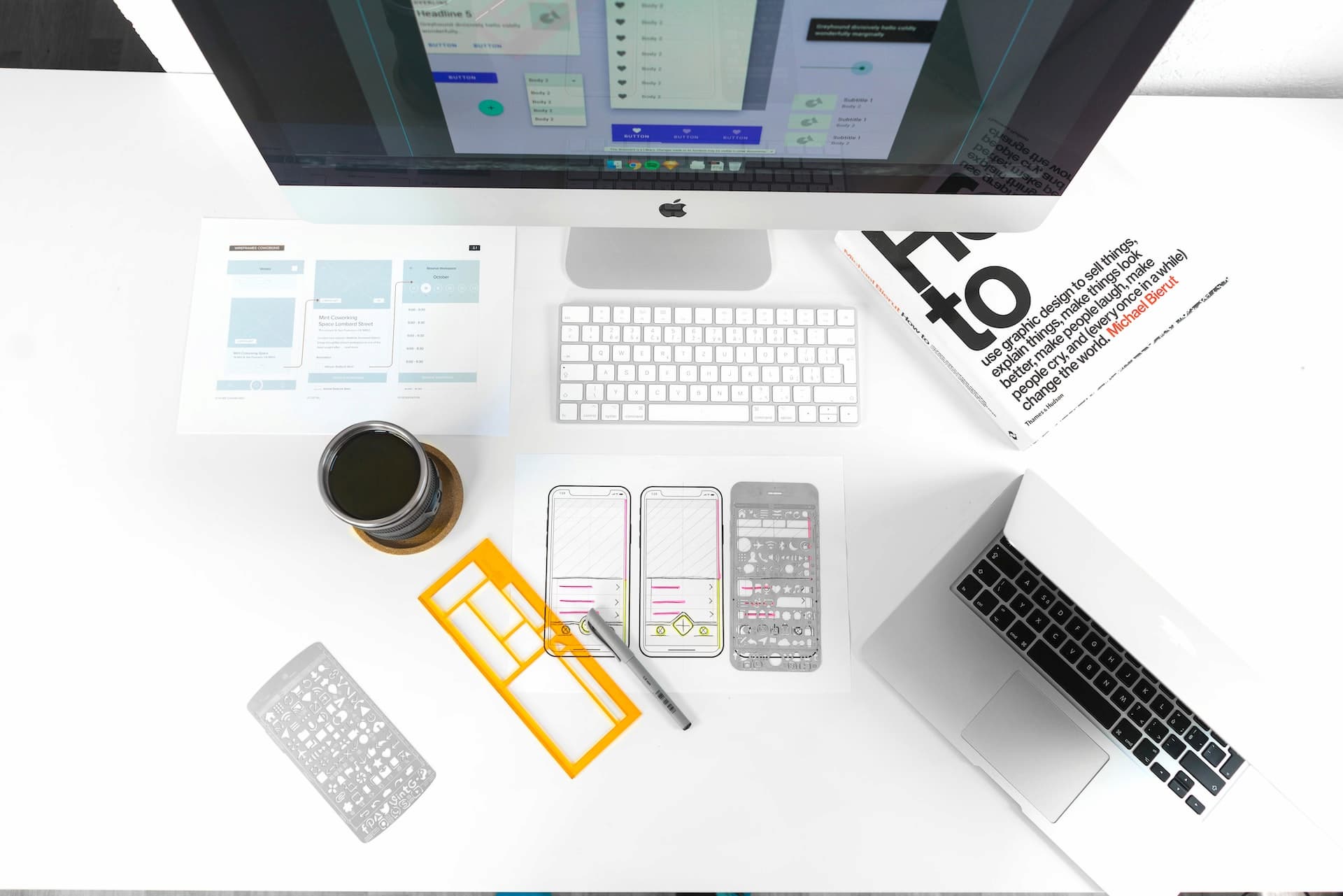Whether it’s a website or a mobile app, UX design attempts can lead to several common mistakes if not carefully developed and thoughtfully implemented.
While designers are encouraged to let their creativity run wild, the foundation and structure of any UX design should remain the same. They should use their best judgement and not be afraid to innovate; it takes creativity to develop a unique product.
To help you develop your best UX design, we’ve compiled designers’ most common UX design mistakes. Read on to learn what these mistakes are and why a great UX design is essential to the success of any online business.

Importance of UX Design
If your website is not optimised for mobile devices, statistical analysis shows that about three-quarters of your visitors will not return to your website. And if your website is not aesthetically pleasing, 52% of users will leave and never return. In this crowded digital world, if your logo, website, or app does not have an appealing aesthetic, it will not get the attention it deserves.
Avoiding common UX design mistakes is the best way to create a customer-centric website and app that appeals to existing customers, attracts new users, and creates customer delight. Let’s assume that your app or website users will have a positive, smooth, and enjoyable experience: In this case, they will achieve their desired results, continue to use your product, and recommend you to their friends and family.
On the other hand, if they have a frustrating, confusing experience, they may cancel their subscription, stop using your product, or share negative reviews with their community.
In short, good UX design has these benefits:
- Builds trust and credibility
- Saves time and money
- Converts new users
- Boosts customer retention and loyalty
- Reduces churn
- Improves SEO rankings
17 Common UX Design Mistakes to Avoid
Here are the most common UX design mistakes designers make unknowingly and helpful tips to avoid them.
#1 Wrong Balance Between Aesthetics & Functionality
If you want an excellent UX, your product should look good and work well – not just one or the other. Suppose you tilt the scales too far in either direction. In this case, you risk frustrating your customers with poor functionality or giving your website or app a bad reputation because of inferior visual elements. An excellent design is essential, but UX will suffer if it doesn’t work well.
#2 Ignoring the User’s Mental Model
In marketing, a mental model reflects the user’s product expectations. It is nothing but his expectations based on previous experiences, needs, similar products, etc. Your design should match the users’ mental models.
Many designers tend to focus on their conceptual model, i.e., the way they see a product, ignoring the possible needs of the users. As a result, there is a mismatch between the way they design something and what the target audience wants.
#3 Overlooking the “In-Between” States
Imagine your user signs up for a service on your website (e.g., a free trial). In principle, your user goes through two states: the initial sign-up page and the success page. In practice, however, there are always stops in between. Depending on the case, you should think about the “intermediate states”, for example:
- What do users see when they enter their data?
- What do they see when they submit their information but forget a field?
- What do they see when there is a system or connection error?
#4 Wrong Innovations
When users visit a website like an e-commerce store, they expect to see a shopping cart in the upper right corner. This is simply something that every e-commerce website features – a universal UX rule for this type of website.
If a UX designer innovates and changes the usual flow to create a unique product, it will confuse the user. If a visitor lands on the e-commerce homepage and does not see the shopping cart in the upper right corner, it’s a significant deterrent and even discourages the user from further shopping.
#5 Use of Carousels on Websites
While carousels can sometimes be helpful, they have numerous usability issues, making them a good candidate in our list of UX design mistakes. Carousels can have a negative impact on UX, as visitors may not see valuable content in some rotating slides. We don’t go too far when we describe website carousels as a superfluous tool with no benefit. Taking control away from the user by automatically displaying images in a loop, they cause distraction from the actual content of the page.
When something is attractive, it doesn’t necessarily mean it is also good in functionality. You may have seen many apps and websites with excellent visual design but functionally flawed. If your website does not have good navigation, it will be unable to meet the user’s expectations.
#7 Large & Fixed Headers
Increasingly, you see sticky headers on websites and apps. “Branding blocks” and fixed-position navigation menus take up a lot of space. These huge elements stick to the top of the browser window (hence the adjective “sticky”) and often block content as the user scrolls down.
Fixed elements, such as sticky headers, can have advantages, but web designers should be careful when using them because they can cause several important UX issues.
#8 Autoplay Videos
Autoplaying videos and ads are one of the most annoying UX design mistakes a designer can make. Imagine you are engrossed in something, and suddenly you see an autoplaying video, and you cannot even skip it.
As a designer, you need to think like a user first. Think about questions like this: Should the user not be given the option to skip it? What’s the point of interrupting a user?
#9 Too Many Pop-Ups
Nothing puts users off more than too many different pop-ups when they land on your homepage. They want some information or need to perform specific actions. They shouldn’t be busy closing annoying windows or navigating away from them before they’ve even started their journey.

#10 Improper Contrast
Contrast is one of the most critical factors designers should consider when designing UX. Otherwise, the content will look lifeless and disappointing. Using high-contrast colours is usually a must for your CTA and multiple layouts. Contrast also plays a vital role in distinguishing content from design.
#11 Using Thin or Light Fonts
Thin and light fonts are ubiquitous on many products today. With advances in screen technology and improved rendering, many websites and app designers are using these fonts because they can deliver elegant, clean, and trendy results. However, thin fonts can cause readability issues and prevent the UX from achieving optimal usability.
#12 Desynchronization Between Content & Design
If you bombard your users or feed your website or application with tons of content, the result is obvious: believe it or not, your users won’t like it! Yes, we’re talking about one of the most disastrous UX design mistakes UX designers can make, which isn’t matching the content to the design.
#13 Irrelevant Content
Call-to-action (CTA) elements, such as buttons, are essential because they motivate users to take the intended action and lead them to a conversion. But sometimes, CTAs are useless because they completely mess up the navigation and discourage users from actually navigating the site.
You have probably seen many websites with a page-sized pop-up that prompts you for a free demo and asks you to sign up for a newsletter. The worst thing about such pop-ups is that they usually have a tiny “exit” icon at the top of the pop-up, which the user often cannot find.
#14 Hopping on Every Design Trend
We can never write a complete guide about common UX design mistakes without talking about such trendy yet misleading techniques. Just like fashion and hairstyles, the web and app design world is full of UX trends that come and go. While staying up-to-date with trends is essential, you don’t have to go along with everything you hear about just because it’s trendy or catchy.
#15 Too Much Animation & Advertisement
Everything seems to make sense in UX design, including animation, if used correctly and in the right place. Animations liven up the design and enhance the overall look, but they can also ruin the plan if used more than necessary. The question is how to introduce ad monetization without destroying your product’s UX.
There is no ideal ad or animation format that works for all types of products. Therefore, developers must consider the harmful effects of adding low-quality ads or inappropriate animations into the UX design.

#16 Ignoring Mobile UX
The number of mobile users is overwhelming and continues to grow. In 2017, the number of smartphone users in Australia was approximately 19.9 million. It’s estimated that this number will increase to 23.6 million by 2026. This represents a smartphone penetration rate of roughly 87% in the country. As a result, a significant rise in mobile app development is expected.
Although many modern businesses aim for an application, not all apps make it to the end – i.e. not all are used for more than a few days. The main reason for uninstalling an app is simple: a poor UX, which doesn’t help the user navigate and use the app as intended.
#17 Forgetting to Evaluate Performance
And that brings us to the final and perhaps most crucial UX design mistake that web or app designers make. The performance of a mobile app or website is a factor that significantly affects the user experience. If your website loads too slowly or a button is not clickable, the user will leave and not come back.
The performance of a software product is not solely the responsibility of a UX designer. However, since the fine-tuning of the product takes place behind the scenes, it is easy to forget or overlook something important. That’s why we strongly recommend keeping a close eye on the analytics and examining the areas users leave most often. You can also conduct a performance audit to identify the weak points and fix the existing issues.
Final Word
When developing UX, balancing efficiency, aesthetics, and usability is essential in deciding which UX best practices are strongest and most accepted by users.
Web designers can develop the most incredible colour schemes, the fanciest scrolling animations, or fantastic parallax effects; however, if users cannot interact with the result, they will quickly move on.
Whether they are minor mistakes or major bloopers, these issues can hurt your business! If you would like to develop a practical and effective UX strategy that makes the rest of the process relatively easy, please get in touch with us. Here at BroadWeb, we can help you develop a suitable UX strategy.









